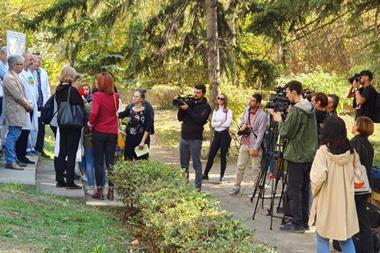Agreement will see €200 million go towards improving links between nations and funding networks of excellence
Science ministers from the west Balkans signed up to a regional R&D pact worth €200 million (£171 million) in Zagreb, Croatia last week. The strategy, which will run from 2014–2020, aims to lift the competiveness of researchers in these countries – Albania, Bosnia and Herzegovina, Croatia, Kosovo, Macedonia, Montenegro and Serbia – easing their integration into global and European science and letting them access new sources of R&D funding.
‘It is important to show that the sector is prepared to spend “better”, “smarter” rather than just “more”,’ says Paulo Correa, senior economist at the World Bank in Washington DC, who coordinates the project.
Economic and political upheaval in the 1990s saw science fall off the policy agenda in these countries. Research capacity deteriorated, links with industry disappeared and spending on science declined dramatically, the strategy notes. Even today, the regional R&D investment of €495 million per year corresponds to roughly the amount invested by the second-largest US research university in 2011. And scientific performance is substantially below that of the average EU country in both quantity and quality.
The strategy proposes reforms to improve these countries’ research bases, promote collaboration and technology transfer between research institutions and industry, push business innovation and innovative start-ups, and strengthen the governance of national research and innovation policies.
By 2020, €55 million are earmarked for 80 large-scale research grants involving at least two countries in the region, 200 PhDs and 50 grants for research projects led by young scientists. Another €55 million will go to set up four networks of excellence in aquaculture, agriculture, renewable energy and nanotech for health. €40 million will be used help to link science with industry and another €40 million to fund early stage start-ups.
It is not clear yet if and when the money will become available to actually implement the strategy. But Correa says that there is little danger that the money won’t be found. ‘The strategy is a very good development product. It shouldn’t be too difficult to sell it – at least in part – to the donor’s community.’
Correa says that representatives of the countries’ finance ministries are onboard and ‘are all aware of the importance of research and innovation for the region’s long term prosperity’. And the strategy, which has been drafted with the regions’ officials and experts, has already contributed to changes there. For example, it helped inform Montenegro’s last revision of their national strategy, says Correa.
‘Countries of the region share a common history and similar interests, especially regarding research and development. Improving social wellbeing and economic competitiveness based on knowledge and innovation is certainly one of these common goals,’ says Kristina Ferara Blaškovic, head of sector for development of science and technology at Croatia’s science ministry, who was on the strategy’s steering committee. ‘Most of the western Balkan countries have been facing similar problems, including the challenge of the “brain drain”, modernisation of research infrastructure, technology transfer implementation and inadequacy of legal frameworks.’
The strategy’s importance, Blaškovic says, is in ‘establishing common ground’ and defining cooperation priorities that all participants can agree upon. She believes the strategy will benefit the country’s scientists given that science ‘hasn’t been utilised sufficiently as a driving force for enhancement of productivity and competitiveness’. ‘It is obvious that that the global crisis has downsized investment in R&D, especially in western Balkans countries, but this joint initiative is recognised as a platform to enhance the efficiency of invested resources in R&D,’ she adds.












No comments yet